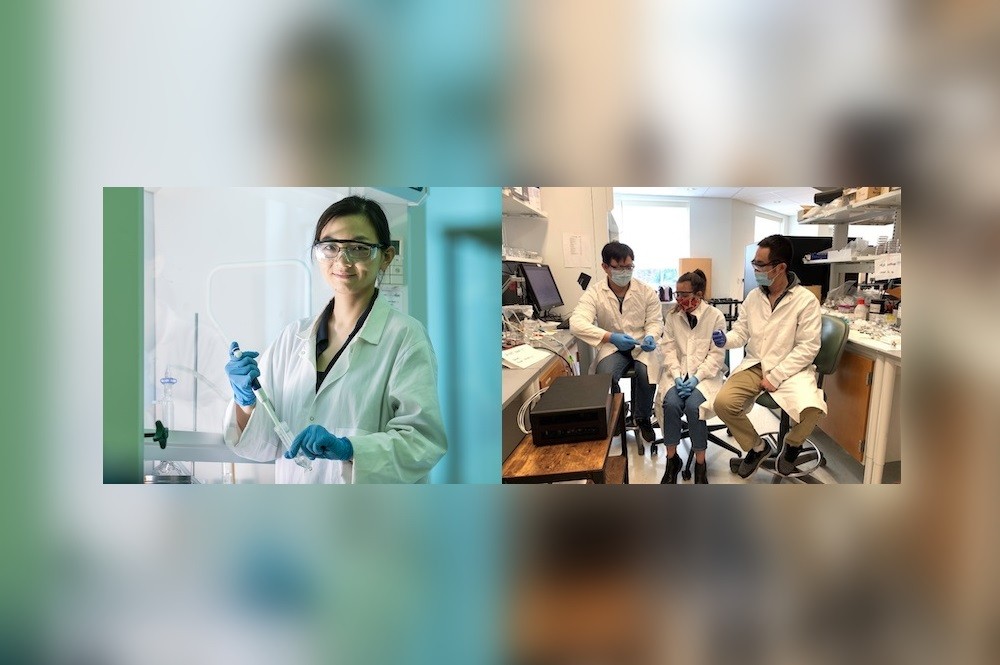(Left) Mason researcher Pei Dong in her lab (Photo by Ron Aira/Creative Services), (Right) Students Rui He, Crystal Bowers and Xiaozhou Huang working on the project in Pei Dong’s lab
The research has received wide recognition. Their work “Binder-Free Wood Converted Carbon for Enhanced Water Desalination Performance” has been published in the journal Advanced Functional Materials.
WD News: With 97% of the world’s water held by oceans, the effort to develop effective saltwater desalination is a high priority amongst the world’s scientists. Capacitive deionisation (CDI), where ions and chemicals are removed from water by applying a low electrical charge, is the most prevalent process. However, there is much more to understand about the kinetics of the process, which could improve the salt absorption capacity of CDI.
It was this challenge that caught the interest of Pei Dong, an Assistant Professor in the Department of Mechanical Engineering at George Mason University’s College of Engineering and Computing. She recognised that tackling this topic would be substantially boosted by incorporating research underway in the lab of Baoxing Xu of University of Virginia’s Mechanical and Aerospace Engineering Department.
Their project, “A study on the ultrahigh salt adsorption capacity of an energy-efficiency water desalination technology,” was supported by a 4-VA@Mason Collaborative Research Grant with the goal of designing next-generation electrode materials to advance the energy-efficient CDI technology.
Dong and her team have reported that they have synthesised different carbon materials that show a much higher salt absorption capacity. Dong anticipates that this technique could dramatically lower desalination costs and contribute to the Sustainable Development Goals.
Source & image courtesy: George Mason University














